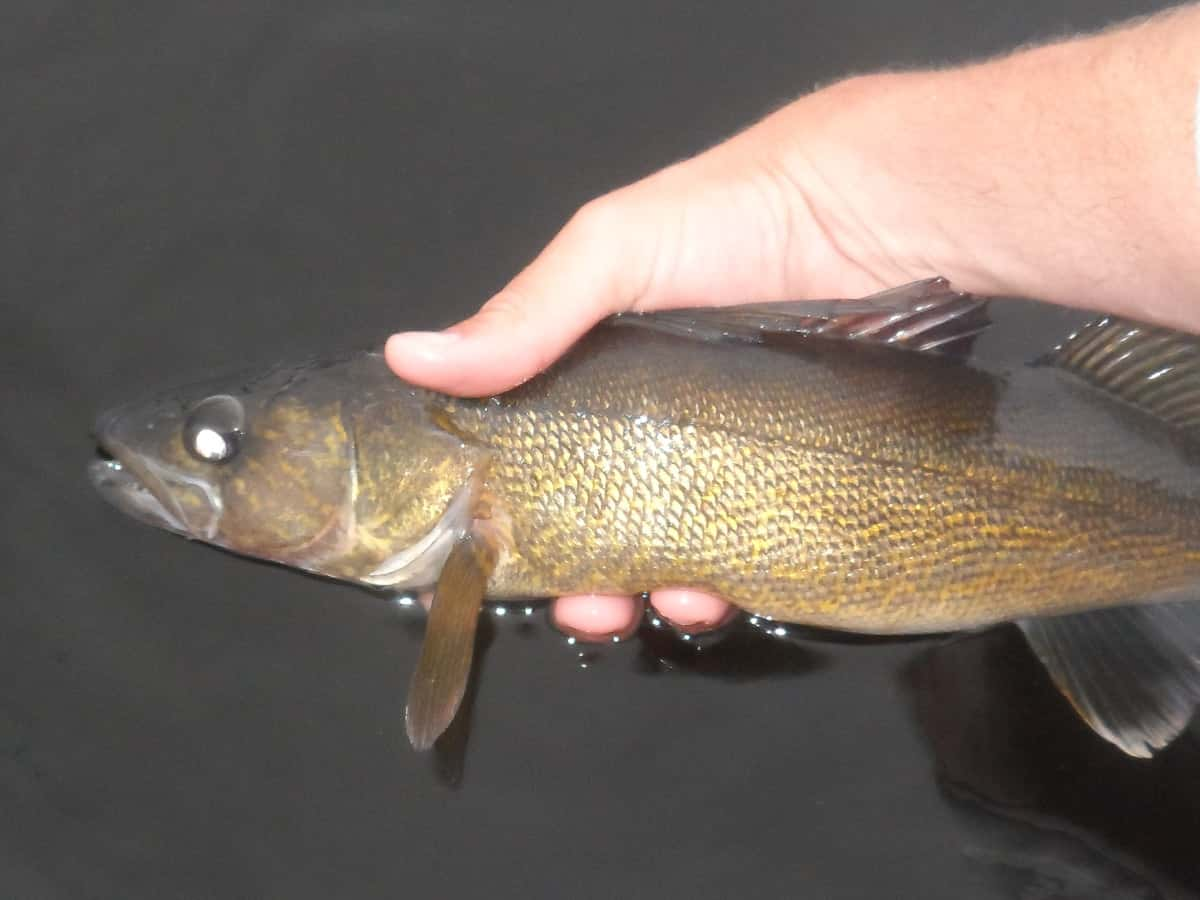
The King. While walleyes may be tops on many anglers’ lists for sport and food, our waters offer many other edible options and preparation methods are as varied as those angling opportunities. Simonson Photo.
By John Bradley
I grew up in Minnesota, and like North Dakota and much of the upper Midwest, the walleye is king. Many people believe it’s the all-around greatest fish that has ever been.
From its head shakes after you set the hook to the ease of filleting their mild white flaky meat, the walleye reigns on the top of the list for anglers. And while I enjoy catching and eating them, recently I’ve been thinking there is more out there.
Don’t get me wrong, I’ve eaten (and will continue to eat) my fair share of walleyes. I was indoctrinated into fish fries from an early age – from catching walleyes, cleaning them, and then joining my siblings in an assembly line production of coating them with Shore Lunch breading before their bath in the fryer. My family has the production down where we’ve routinely fed over 100 people at events, reunions or weddings. Since I can remember, my dad, and grandpa before him, has always had the same consistent recipe: fillets dipped in flour, egg, and shore lunch and immediately dropped in the fryer.
But that all changed a few years ago on an ice fishing trip when an older, more experienced fisherman made a simple statement: “After eating thousands of walleyes, the taste of pike is refreshing.”
This caught me off guard and my first thoughts were “well I’ll trade you any of the pike I catch for walleyes any day.” That comment stuck with me for a couple weeks and had me questioning what other opportunities I’ve been missing out on. A slow day at the office had me researching new fishing techniques, different species of fish and new recipes to experiment with. There are some purists who believe that frying is the only way to cook walleye and the only argument to have is what breading you use.
I have eaten my fair share, but I like to try new things, too. There are plenty of recipes out there for the person who is willing to break free from the crowd and is interested in trying something different.
The first diversion from the traditional fish fry came from an Outdoor Life article I read on a slow day at work. They were making “crappie cakes” like how someone from Maryland would with crab meat. It was a simple recipe and one that you could prep all at once and freeze the patties for an easy meal later. The second recipe I used was my grandpa’s – pickled pike. As a kid the thought of pickled pike would run me out of the kitchen. The jar in the back of the fridge with floating onions, pike and peppercorns was not appealing to me, but when I tried it again as an adult, I was hooked.
The best part about pickled fish is that the brine breaks down any bones you may have missed while cleaning the pike. Outside of shooting my grandpa’s old Browning .22 for squirrels and cottontails, this pickled pike recipe keeps me connected to his legacy as an outdoorsman.
My latest culinary diversion came from watching an outdoor show on tv. The guys were fishing down in Texas and had stopped for a lunch on shore. They were cutting thin strips of meat, soaking it in lemon and lime juice, and eating it on crackers with diced onions and peppers. This style is called Ceviche. It was surprisingly good, and probably even better in the summer with a cold beer.
If I’m lucky enough to get back out for pike this winter, I am going to try and use the Roe (the fish eggs that spill out when you clean fish this time of year). Apparently, it’s considered a delicacy in some parts of the world – going for as much as $75 a pound in Eastern Europe. Growing up I would have laughed in your face if you told me I would be thinking about eating fish eggs, but now I’m excited about the prospect and using more of the fish that I bring home for the table.
I don’t think anybody will argue that a fried walleye fillet is a bad meal. However, it still surprises how some anglers are still unaware that walleyes have cheeks, that smoked whitefish makes a great dip, or that you can eat northern pike without crunching on bones every bite. With the willingness to do a little research and being adventurous enough to try something new in the kitchen, you can not only get a great meal, but get the full reward of bringing something from the waters to the table. And while my doctor may warn me about mercury levels, I’ll take my chances.
If I die from mercury poisoning from eating too much fish, I’ll count that as a life well lived and a badge of honor as a fisherman – both in eating something I love, and the time spent on the water with a fishing rod in my hand.
John Bradley is the Executive Director of the North Dakota Wildlife Federation and a Dakota Edge Outdoors contributing writer.

